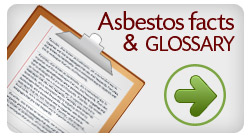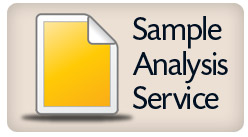
PH: +61 (0) 418 817 750
GLOSSARY
Accredited Laboratory means a testing laboratory accredited by the National Association of Testing Authorities, Australia (NATA) or a similar accreditation authority, or otherwise granted recognition by NATA, either solely or in conjunction with one or more other persons.
Air Monitoring means airborne asbestos fibre sampling to assist in assessing exposures and the effectiveness of control measures. Air monitoring includes exposure monitoring, control monitoring and clearance monitoring.
Note: Air monitoring should be undertaken in accordance with the Guidance Note on the Membrane Filter Method for Estimating Airborne Asbestos Fibres [NOHSC:3003 (2005)]
Airborne Asbestos Fibres means any fibres of asbestos small enough to be made airborne. For the purposes of monitoring airborne asbestos fibres, only respirable asbestos fibres (those fibres less than 3 mm wide, more than 5 mm long and with a length to width ratio of more than 3 to 1) are counted.
Note: Airborne asbestos fibres are generated by the mechanical disintegration of Asbestos-Containing Materials (ACM) and subsequent dispersion of the fibres into the air from activities such as mining and the use, removal and disposal of asbestos and ACM. Airborne dust has the potential to contain respirable asbestos fibres.
ALARP means As Low As Reasonably Practicable. The exposure of workers and others to asbestos must be eliminated or otherwise kept as low as reasonably practicable, and in all circumstances must be kept below the NES.
Asbestos
means the fibrous form of mineral silicates belonging to the serpentine and amphibole groups of rock-forming minerals, including actinolite,amosite (brown asbestos), anthophyllite, chrysotile (white asbestos), crocidolite (blue asbestos), tremolite, or any mixture containing one or more of the mineral silicates belonging to the serpentine and amphibole groups.
Asbestos Cement (AC) means products consisting of sand aggregate and cement reinforced with asbestos fibres (e.g. asbestos cement pipes and flat or corrugated asbestos cement sheets).
Asbestos-Containing Material (ACM) means any material, object, product or debris that contains asbestos.
Note: Information for determining if a material contains asbestos is provided in Part 9.
Asbestos Removalist means a competent person who performs asbestos removal work.
Note: An asbestos removal licence is required in all State and Territory jurisdictions for the removal of friable ACM. Some States and Territories also require a licence for removal of specified quantities of ACM, regardless of whether they are friable, and relevant OHS authorities should be consulted prior to any removal work.
Asbestos Vacuum Cleaner means a vacuum cleaner that is fitted with a High Efficiency Particulate Air (HEPA) Filter and complies with Australian Standard 3544-1988 Industrial Vacuum Cleaners for Particulates Hazardous to Health. A domestic vacuum cleaner is not suitable for use with asbestos.
Asbestos Waste means all removed ACM and disposable items used during the asbestos work, such as plastic sheeting used to cover surfaces in the asbestos work area, disposable coveralls, disposable respirators, rags used for cleaning.
Asbestos Work Area means the immediate area in which work on ACM is taking place. The boundaries of the asbestos work area must be determined by a risk assessment.
Note: The asbestos work area should include the boundaries of an enclosure or barriers set up to warn or restrict access to the area where the asbestos work is being undertaken.
Breathing Zone means a hemisphere extending in front of a person’s face, with a radius of 300 mm from the midpoint of an imaginary line between the ears.
Clearance Inspection means an inspection, carried out by a competent person, to verify that an asbestos work area is safe to be returned to normal use after work involving the disturbance of ACM has taken place. A clearance inspection must include a visual inspection, and may also include clearance monitoring and/or settled dust sampling.
Note: A clearance inspection should only be carried out when the asbestos work area is dry.
Clearance Monitoring means air monitoring using static or positional samples to measure the level of airborne asbestos fibres in an area following work on ACM. An area is ‘cleared’ when the level of airborne asbestos fibres is measured as being below 0.01 fibres/mL.
Note: Static or positional samples are taken at fixed locations which are usually between one and two metres above floor level,
Competent Person means a person possessing adequate qualifications, such as suitable training and sufficient knowledge, experience and skill, for the safe performance of the specific work.
Control Level means the airborne concentration of a particular substance which, if exceeded, indicates a need to implement a control, action or other requirement. Control levels are generally set at no more than half the NES for the substance. Control levels are occupational hygiene ‘best practice’, and are not health-based standards.
Note: The first Control Level for Asbestos is set at 0.01 fibres/mL of air.
Control Monitoring means air monitoring, using static or positional to measure the level of airborne asbestos fibres in an area during work on ACM. Control monitoring is designed to assist in assessing the effectiveness of control measures. Its results are not representative of actual occupational exposures, and should not be used for that purpose.
Note: Static or positional samples are taken at fixed locations which are usually between one and two metres above floor level,
Dust and Debris means visible particles, fragments or chunks of material, large and heavy enough to have settled in the work area, that are likely to have originated from ACM.
Exposure Monitoring means air monitoring to determine a person’s likely exposure to a hazardous substance. Exposure monitoring is designed to reliably estimate the person’s exposure, so that it may be compared with the NES.
Note: Exposure monitoring includes airborne asbestos fibre sampling, analysis, estimation of time-weighted average exposure and interpretation. Samples are taken within the breathing zone and are usually obtained by fastening the filter holder to the worker’s jacket lapel.
Friable (Asbestos) means asbestos-containing material which, when dry, is or may become crumbled, pulverised or reduced to powder by hand pressure.
Note: This may include ACM that have been subjected to conditions that leave them in a state where they meet the above definition, such as weathering, physical damage, water damage etc.
Hazard means any matter, thing, process or practice that may cause death, injury, illness or disease.
Health Surveillance means the monitoring of a person to identify any changes in their health as a result of exposure to a hazardous substance. It does not include exposure monitoring.
High Efficiency Particulate Air (HEPA) Filter means a disposable, extended media, dry type filter, in a rigid frame, with a minimum filtration efficiency of 99.97% for nominal 0.3 mm diameter thermally generated dioctylphthalata (DOP) particles or an equivalent efficiency for a specified alternative aerosol and with an initial maximum resistance to airflow of 250 pa when tested at its rated airflow capacity (see Australian Standard 4260-1997 High Efficiency Particulate (HEPA) Filters – Classification, Construction and Performance).
In situ means fixed or installed in its original position, not having been moved.
Inaccessible Areas means areas which are difficult to access, such as wall cavities and the interiors of plant and equipment.
Membrane Filter Method (MFM). means the technique outlined in the NOHSC Guidance Note on the Membrane Filter Method for Estimating Airborne Asbestos Fibres [NOHSC:3003 (2005)]
National Exposure Standard (NES) means an airborne concentration of a particular substance, within the worker’s breathing zone, which according to current knowledge, should not cause adverse health effects or undue discomfort to nearly all workers. NES are established, from time to time, by the National Occupational Health and Safety Commission (NOHSC) and are published on the NOHSC website (see Appendix J).
Note: The NES for all forms of asbestos is 0.1 fibres/mL of air, measured using the Membrane Filter Method (MFM).
Person with Control means, in relation to premises, a person who has control of premises used as a workplace. The person with control may be:
- the owner of the premises;
- a person who has, under any contract or lease, an obligation to maintain or repair the premises;
- a person who is occupying the premises;
- a person who is able to make decisions about work undertaken at the premises; or
- an employer at the premises.
Personal Protective Equipment (PPE) means equipment and clothing that is used or worn by an individual person to protect themselves against, or minimise their exposure to, workplace risks. It includes items such as facemasks and respirators, coveralls, goggles, helmets, gloves and footwear (see Appendix C).
Respirable Asbestos Fibre means a fibre of asbestos small enough to penetrate into the gas exchange regions of the lungs. Respirable asbestos fibres are technically defined as fibres that are less than 3 mm wide, more than 5 mm in length and have a length to width ratio of more than 3 to 1.
Risk means the likelihood of a hazard causing harm to a person.
Note: In this code of practice, Risk relates to illness or disease arising from exposure to Airborne Asbestos Fibres.
Settled Dust Sampling means the sampling and analysis of settled surface dust to provide an indication of cleanliness following disturbance of ACM. Settled dust sampling does not provide an indication of risk to health. Sampling techniques include the use of adhesive tape, wipe or micro-vacuum (using an air sampling pump and filter). Analysis can be by polarised light microscopy (PLM) or transmission electron microscopy (TEM).
Note: Contamination may occur as a result of deterioration of, or work processes involving ACM.
Shadow Vacuuming means the operation of an asbestos vacuum cleaner that is either directly attached to a tool or hand-held by a second worker as close as possible to the source of released asbestos fibres throughout the use of the tool.
Structure means any construction, whether temporary or permanent.
Note: A structure includes a bridge, erection, edifice, wall, chimney, fence, earth, works, reclamation, ship, floating structure or tunnel.
Work means any activity, physical or mental, carried out in the course of a business, industry, commerce, an occupation or a profession.
Worker means a person who does work, whether or not for reward or recognition.
Note: ‘Workers’ include persons working under contracts of employment, apprenticeships, traineeships and other contracts of service, but they also include other persons subject to direction by persons with control, such volunteers and work experience students.
Workplace means any place where a person works.







